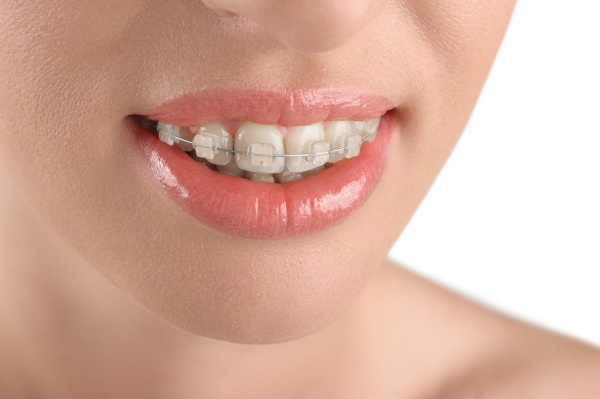Orthodontics 101: What is Dental Occlusion?

Dental occlusion is how a dentist defines how your upper teeth and lower teeth come together when you close your mouth. In other words, your dental occlusion is the exact same thing as your bite. We all have different bites, depending on what we are doing or feeling at any given time. The way the teeth come together as we chew is different from the way they close when we bite into an apple. Your bite is different when you are asleep or fully relaxed. When you are angry, anxious or otherwise distressed, your dental occlusion also changes. If you are wondering what this has to do with your oral health, keep reading to find out how orthodontics can help.
What determines a person's dental occlusion?
An individual's dental occlusion is the sum of many different factors. To begin with, the shape and size of a person's jaws determine how their teeth erupt. As an example, a jaw that is too small or narrow may cause overcrowded and protruding teeth. A jaw that is larger than the combined size of its teeth can cause a person to have spaced teeth. There are many other ways that the jaw can affect a person's bite.
The size, shape and overall health of the teeth can also determine if a person has a good bite or a malocclusion. In most cases, patients can avoid having a bad bite with good oral habits that start in childhood. But for some people, good oral habits are not enough. They may have an inherited or congenital malocclusion that needs to be corrected by an orthodontist. A person’s bite can also change because of trauma, teeth grinding, periodontal disease and missing teeth.
How dental occlusion affects oral health
Well-aligned teeth are easy to clean. They also allow a person to eat and speak with ease. In contrast, a bad bite can cause all sorts of problems. For example:
- Crowded teeth are hard to clean, which can lead to plaque buildup, tooth decay or gum disease
- A person who has a severe overbite or underbite may have trouble talking, breathing or chewing
- People with gapped teeth may have a hard time eating. They may also be self-conscious about their smile
- Malocclusion can also affect the shape and overall aesthetic of the face
Different malocclusions and their treatment
There are lots of ways that teeth can be misaligned and there are a few devices used in orthodontics that can help reposition the teeth. It turns out that each person has their own unique set of circumstances. As such, they need a treatment plan that is tailor-made for their situation. A typical treatment plan involves the use of an orthodontic device. Sometimes the treatment plan will include extraction or oral surgery. Generally speaking, how an orthodontist treats a bad bite depends on the class of malocclusion a person has. For example:
1. Class 1 malocclusion
A person with this type of malocclusion will have jaws that align with the rest of the skull, for the most part. This type of bad bite usually presents itself as moderately crowded, gapped or crooked teeth. Most people who need braces have a class 1 malocclusion. A dentist will usually treat this type of bad bite with braces, the most basic treatment in orthodontics.
2. Class 2 malocclusion: An overbite
A severe overbite happens when the lower jaw is smaller than the upper jaw. A person with an overbite will have front teeth that overlap the bottom teeth. An orthodontist will create a treatment plan to align both jaws. Treatment usually involves one or more orthodontic devices. In very severe cases, measures like tooth extraction and jaw surgery may be necessary.
3. Class 3 malocclusion: An underbite
A severe underbite occurs when the lower teeth overlap the teeth in the upper jaw. It happens when the lower jaw is larger than the upper jaw. Treatment often includes the use of an orthodontic device to reshape the lower or upper jaw. If the underbite is severe, an orthodontist might add surgery to the treatment plan.
Go through life with a beautiful smile
If you have a bite that could use some correcting, visit our practice in Coral Gables. We will work with you to get the right diagnosis and craft the perfect treatment for your teeth.
Let's get started…
Request an appointment here: https://www.gablesexceptionaldentistry.com or call Gables Exceptional Dentistry at (305) 203-4132 for an appointment in our Coral Gables office.
Check out what others are saying about our services on Yelp: Read our Yelp reviews.
Related Posts
Dental veneers or dental crowns may be viable solutions to improve your teeth's appearance and functionality. These cosmetic dental treatments offer different approaches and benefits while addressing various dental issues. Discover which of these two transformative options is most suitable for you.Dental veneers are thin porcelain or composite resin shells that the dentist will custom-design…
A dental implant is the gold standard of dental restorations. It provides stability and natural-looking results. Understanding the benefits of implants can motivate you to see your general dentist about it. Here are the different oral health advantages of a dental implant.The titanium rod acts as the dental root. It merges with the jawbone and…
Dental crowns are restorations that can address a range of dental issues, from severely damaged teeth to protecting a tooth after a root canal. They help preserve oral health and enhance a smile's appearance. In addition to being versatile, they are available in different materials, which can be helpful for individuals who want options.Dental crowns…
Dental crowns are a reliable and effective tool for restoring damaged teeth. While most people think of dental crowns in relation to root canals, crowns can also restore beauty and function to cracked teeth. If you have fractured a tooth, a dental crown may be the solution you have been looking for.A dental crown sits…
